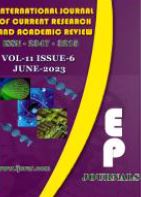Abstract Volume:11 Issue-6 Year-2023 Original Research Articles
 |
Online ISSN : 2347 - 3215 Issues : 12 per year Publisher : Excellent Publishers Email : editorijcret@gmail.com |
The current review article aims to briefly highlight the most important genomics technologies that may be used to create breeds that are productive and well-adapted in a given circumstance. It also emphasizes the role that bioinformatics plays in modern chicken breeding. Advances in genomics information technologies are valuable opportunities for achieving the required improvement, but their implementation implies access to technical and financial resources with suitable adjustment in the local situation. The majority of domesticated livestock species are chickens. The foundation for genomics has been established by the dramatic advancement of molecular genetics. The applications of the newest generations of molecular markers are incredible tools for farm animals' genetic advancement. These markers offer more precise genomic data and an improved understanding of the animal genetic resources. Genomics tools are essential for the accurate, fast, and efficient breeding of animals. Compared to other domesticated animals, chicken is widely accepted and has little to no taboos in terms of cultures, religions, and society. With regard to resolving the issues of food security in a world affected by climatic change and human population expansion, it offers a unique genetic resource due to its resilience to a variety of environmental circumstances and demonstrated potential for breeding improvement. The historical evolutionary history of the chicken has been reconstructed thanks to recent investigations that have revealed new information about its DNA. Breeders of chickens must move more quickly towards creating and choosing enhanced breeds that can withstand environmental stress without compromising production and productivity.
How to cite this article:
Shambel Taye. 2023. Poultry Breeding: From Domestication to Genomic Tools-A Review.Int.J.Curr.Res.Aca.Rev. 11(6): 74-84doi: https://doi.org/10.20546/ijcrar.2023.1106.006



Quick Navigation
- Print Article
- Full Text PDF
- How to Cite this Article
- on Google
- on Google Scholor
- Citation Alert By Google Scholar
